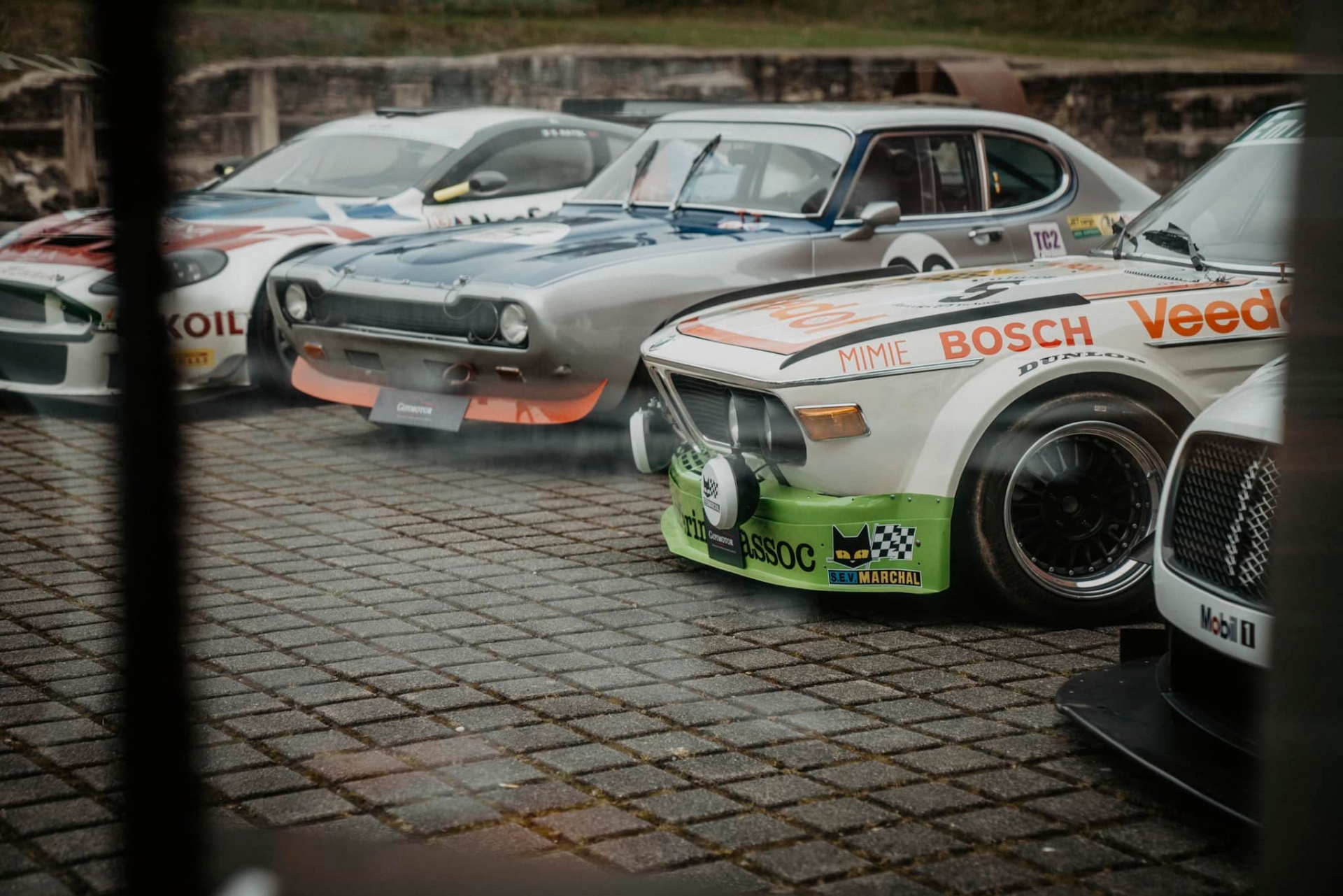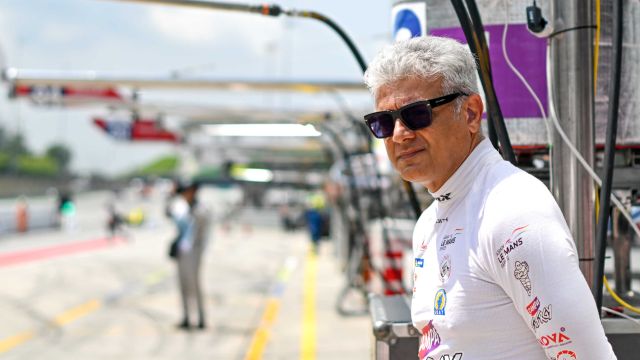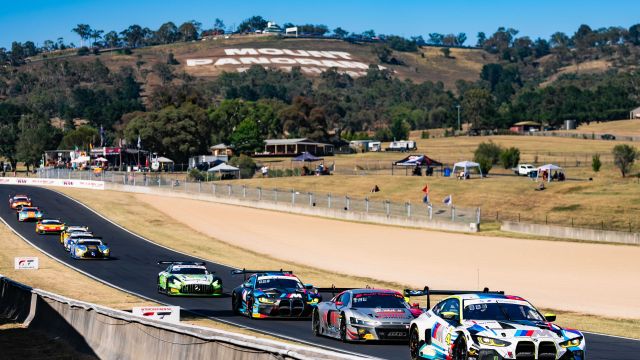A century of history at the 24 Hours of Spa
The 76th edition of the CrowdStrike 24 Hours of Spa will mark a major anniversary for the biggest GT race in the world. Organised for the first time on 19/20 July 1924, the Belgian endurance classic will this year celebrate its centenary between Wednesday 26 and Sunday 30 June. Initially known as the 24 Hours of Francorchamps, the event could have disappeared several times. But since 1964 it has remained an annual fixture, cultivating its own unique appeal, while the transition to GT cars in 2001 has allowed it to flourish more than ever.
Inspired by the inaugural 24 Hours of Le Mans, which was held in 1923, the leaders of the Belgian motorsport federation initially followed the same path. Scheduled a few weeks after the French classic in July 1924, the maiden 24 Hours of Francorchamps was in some ways ‘the revenge of Le Mans’. While Belgian brands Speedsport and Miesse were present, it was the French manufacturers that formed the majority of the grid, the 2-liter Bignan of Henri Springuel and Maurice Becquet winning after completing 1,879 km at an average of 78 km/h.
Unsurprisingly, the maiden running was marked by the presence of rain and fog. The public was already the centre of attention, with large grandstands and a funfair adding to the spectacle.
The slow decline
While the early years were encouraging, the 24 Hours of Francorchamps could not match the aura of Le Mans, while the devastating effects of the stock market crash of 1929 wreaked havoc on the economy. So, after a disappointing 1933 edition, the race disappeared for one year, then began alternating with the Belgian Grand Prix. As such the 24 Hours was not staged in 1934, 1935, 1937 or 1939.
Following the Second World War the authorities quickly rebuilt the circuit. Indeed, the 24 Hours of Francorchamps returned in 1948 – one year earlier than Le Mans. From a sporting point of view, the initial post-war editions were of genuine interest; financially, however, they were a disaster. The event disappeared from the calendar once again in 1950, and another revival in 1953, as part of the new FIA World Sportscar Championship, failed to reverse the trend. The 24 Hours of Francorchamps seemed to have said its final farewell.
1964: the rebirth
It was not until 1964, and the intervention of Paul Frère, that the 24 Hours of Francorchamps returned. The journalist-driver – a winner at Le Mans in 1960 – joined forces with Hubert de Harlez from the Royal Automobile Club of Belgium. They hatched a plan: as Spa could not be the biggest endurance race in the world, and with Le Mans increasingly turning to prototypes, it should be the international reference for touring cars. This was the ideal platform for manufacturers to demonstrate the reliability and performance of their so-called ‘production’ cars.
The performances were astonishing. Sharing a Mercedes-Benz at the 1964 edition, Gustave Gosselin and Robert Crevits covered 3,962 km at an average of 164 km/h, shattering the old record from 1953 when the winning Ferrari averaged 152 km/h. The show was spectacular, ensuring a positive response from competitors and spectators alike. At last, the 24 Hours of Francorchamps had found its raison d’etre.
But there was a new threat that could yet call everything into question: the safety of the Spa-Francorchamps track. Speed had always made the Ardennes circuit as captivating as it was dangerous, even costing it a place on the Formula 1 calendar after the 1970 Belgian Grand Prix. Touring cars could reach terrifying speeds: in 1972, the Ford Capri RS of winners Jochen Mass and Hans-Joachim Stuck ran for 24 hours at an average of 187 km/h – pit stops included!
The addition of safety barriers was not sufficient, sometimes having a negative effect: cars could rebound on to the track, placing them in even greater danger. There were nine driver fatalities between 1964 and 1975, including three in the 1973 edition alone. Fortunately, the creation of a new section connecting Combes and the Blanchimont quarry made it possible to reduce the length of the circuit to 7 km for the 1979 edition.
In the eighties, touring car races became more and more popular. The 24 Hours was the headliner of the European Championship – and even a World Championship in 1987 – allowing it to enjoy a boom period. But the disappearance of the European Championship at the end of 1988 marked the beginning of a new decline. There was an absence of appropriate international regulations, while the Super Touring and Super Production categories failed to rekindle the flame. Though 82 cars took part in 2000, the overall quality of the field had arguably never been lower. The public was losing interest and it was clear that the status quo was no longer an option. Once again, the 24 Hours of Spa needed to reinvent itself.
A new future with GTs
GT racing was booming during the nineties, mainly thanks to Stéphane Ratel. After joining forces with Patrick Peter and Jürgen Barth to launch the BPR in 1994, the boss of SRO Motorsports Group had collaborated with the international federation since 1997, within the framework of FIA GT. These high-performance cars were truly spectacular, both to see and to hear. At the same time, they could not fight for overall victory at the 24 Hours of Le Mans and were missing a flagship event with a long history. In this context, the 24 Hours of Spa and the GT cars that SRO brought were a match made in heaven. When they arrived in 2001, the public returned in droves.
You know the rest of the story. The enormous success of GT3 – another creation of Stéphane Ratel – has resulted in this becoming the only category of car eligible for the CrowdStrike 24 Hours of Spa. Around 10 manufacturers are present, with grids of 70 entrants contesting the race. Technically any one of them could win, with the quality of the team and drivers making the difference. No other race features so many cars competing at such a high level. Indeed, the CrowdStrike 24 Hours of Spa is not only the biggest GT race in the world, but also one of the most spectacular motorsport events on the planet. Rarely has a centenarian been in such good health.






Comments
Log in to comment the article